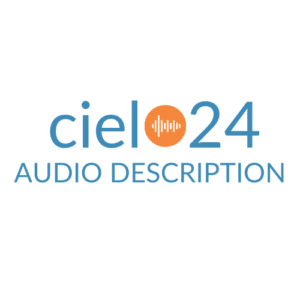This randomized controlled trial examined the impacts of Same-Language-Subtitling (SLS), a karaoke-style subtitling intervention, on…

How To Improve Video Performance: Part 1
The data hiding in your videos is the key to your company’s ultimate success. When you fully leverage your video content as data that is perceivable to search engines, video performance soars through the roof. Below are three of five revenue-generating benefits of utilizing media intelligence.
Enabled SEO for Video Performance
SEO is a leading component of any online marketing campaign. In 2016 Google reported over 2 trillion searches, or about 100 billion searches a month. And the numbers are only growing.

For SEO to be optimized effectively, web pages must first be crawled and then entered into a search engine’s index. Only once a web page is indexed, can it be found through a Google search. In the case of online videos, search engines are unable to crawl the actual video content, because only text, not spoken word, is visible to them. This means that search engines, such as YouTube, only index videos based on alt tags and descriptions – aka metadata.
Businesses can overcome this indexing obstacle and enable successful SEO for video by using advanced metadata and transcripts. This tactic creates a textual representation of the spoken content in videos, allowing search engines to crawl all of your video’s content and subject matter, and index the video accurately.
Without media intelligence, video SEO can only rely on human entered tags, but with advanced metadata and transcripts, search engines can read a wider range of terms and topics. Research has shown this to be a successful SEO plan of action, with video web pages significantly benefiting after adding transcripts.
The idea here is that the more quality metadata that can be ranked within the different verticals in Google, such as image search, organic search, and video search, the more traffic you can drive to your site.
The idea here is that the more quality metadata that can be ranked within the different verticals in Google, such as image search, organic search, and video search, the more traffic you can drive to your site.
For example, the e-commerce retailer, eBags, added several still video images to the bottom of the web pages that had video on them. Many of these images were indexed in Google Images and, as a result, eBags experienced a 115% uptick in traffic to the video pages.
Publishing SEO-optimized videos is paramount if you want your videos to be easily found. So, it is imperative that SEO is optimized if you want your audience to discover your company’s videos and media.
Longer Watch Time for Video Performance
Watch time, or the length of time someone spends watching a video, is not only important for communicating your ideas or call to action, but it is also a main consideration for search engines when ranking your video. Search engines view watch time as an indicator of quality video content. More time spent watching means higher quality content and results in a higher search ranking and improved video performance.
Both Google and YouTube use watch time as a primary factor for ranking, rather than relying on the number of video views. Google even patented Watch Time Based Ranking, in which the more and longer a user watches a video, the higher the Google ranking will be. This increased emphasis on watch time pushes companies to provide content that fosters deeper interaction.
Captions have been proven to encourage this interaction and increase watch time for all viewers. Recent trials from leading online publishers revealed a 40% increase in video viewing when videos were captioned. They also found that viewers were 80% more likely to watch a video to completion when closed captioning and multi-language subtitling were available. Facebook’s internal tests showed that captioned video ads increased view time by an average of 12%.
Captions correlate with longer watch times for various reasons. For many video viewers, the environment they are in does not allow them to turn on or hear the sound. For others, captions make video viewing more enjoyable. Ofcom, the communications regulator in the UK, found that 80% of people who used closed captions had no hearing loss. And for the many viewers whose first language is not English, captions enable a fuller understanding of video.
Wider Reach Leads to Improved Video Performance
Approximately 15% of Americans have some form of disabling hearing loss. Captions are necessary for providing these individuals access to your videos. Many government departments and educational institutions are required by Federal law to caption all multimedia content. In business, it is not only ethical and non-discriminatory to caption video content, but it is also smart to do, as your marketing efforts will reach a much larger audience.
Additionally, there are over a billion people worldwide speaking English as a second or foreign language who will have access to your videos if they are captioned. Offering subtitles is another great way to reach the growing global market; a whopping 74% of internet users speak languages other than English.
On YouTube specifically, 80% of the views come from outside the US. You can navigate YouTube in a total of 76 different languages. If you are a globally reaching company, appealing to international audiences is essential. With an increased audience base who is now able to watch, understand, and interact with your videos, the return on investment skyrockets.
Look out for part two of this blog series to be posted next week!
cielo24 provides digital accessibility solutions – Captions, Transcripts, Audio Description
 Using our own robust AI machine and human quality control, we offer a full suite of accessibility solutions. Sign up for the Self Serve web app where human-verified transcriptions and captions start at less than $1/minute. Contact us online to get started!
Using our own robust AI machine and human quality control, we offer a full suite of accessibility solutions. Sign up for the Self Serve web app where human-verified transcriptions and captions start at less than $1/minute. Contact us online to get started!
Looking for Audio Description? Get started with WCAG 2.1 AA compliant Audio Description product. cielo24’s new Audio Description solution brings an improved video experience to people with low vision, vision impairment, and blindness. Give it a try now >>



